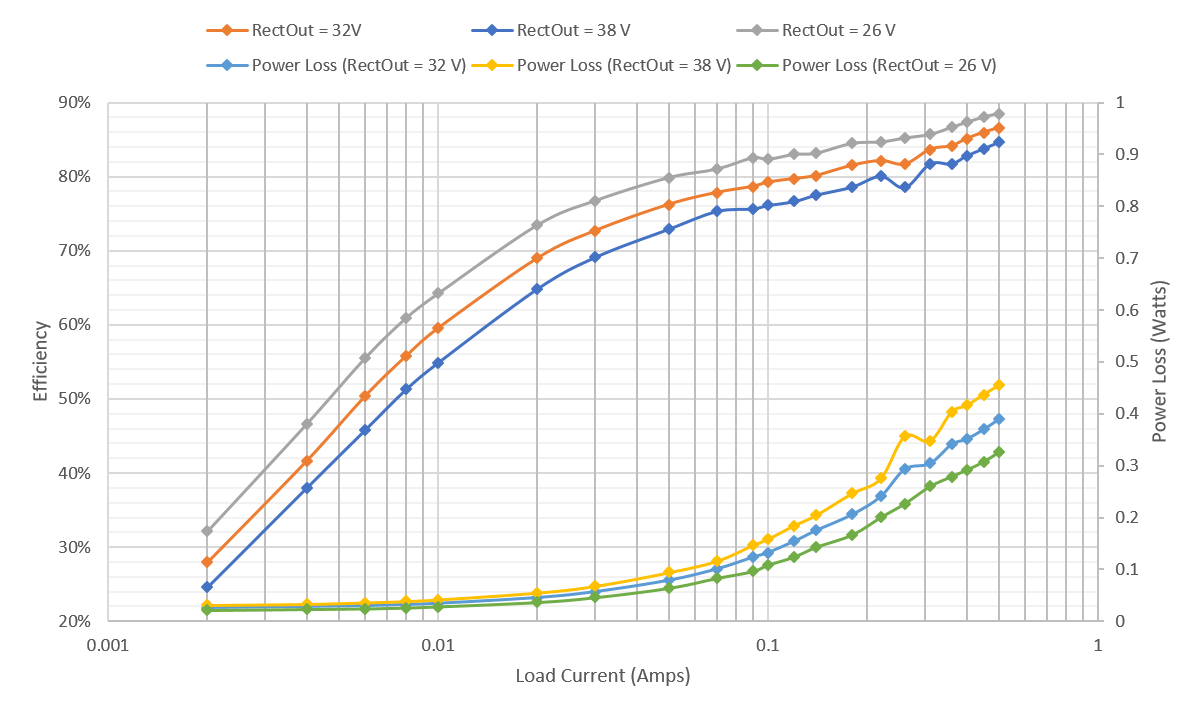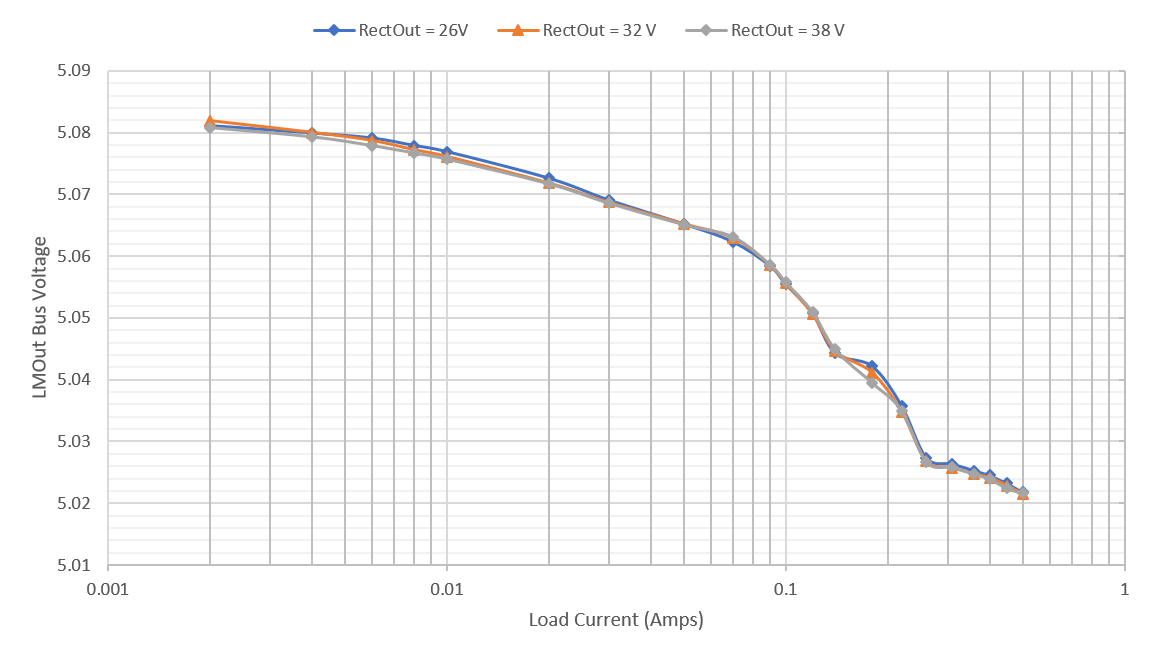TIDUF26 june 2023 BQ24072 , LMR36520 , TLV62568 , TPS2116
- 1
- Description
- Resources
- Features
- Applications
- 6
- 1System Description
- 2System Overview
-
3Hardware, Software, Testing Requirements,
and Test Results
- 3.1 Hardware Requirements
- 3.2 Test Setup
- 3.3 Test Results
- 4Design and Documentation Support
- 5About the Author
3.3.10.2 LMR36520
The LMR36520 provides exceptional efficiency despite the large voltage difference between the input and output of the device. As with the BATT to 3V3 conversion, the efficiency of LMR36520 increases as the input voltage decreases. The input voltage was measured at node RectOut side of R9 and the output voltage was measured at C23. The input current was fed through node RectOut and the output current was drawn from LMOut side of C23 and C24.
 Figure 3-54 LMR36520 Efficiency and Power
Loss
Figure 3-54 LMR36520 Efficiency and Power
Loss Figure 3-55 LMR36520 Load
Regulation
Figure 3-55 LMR36520 Load
Regulation